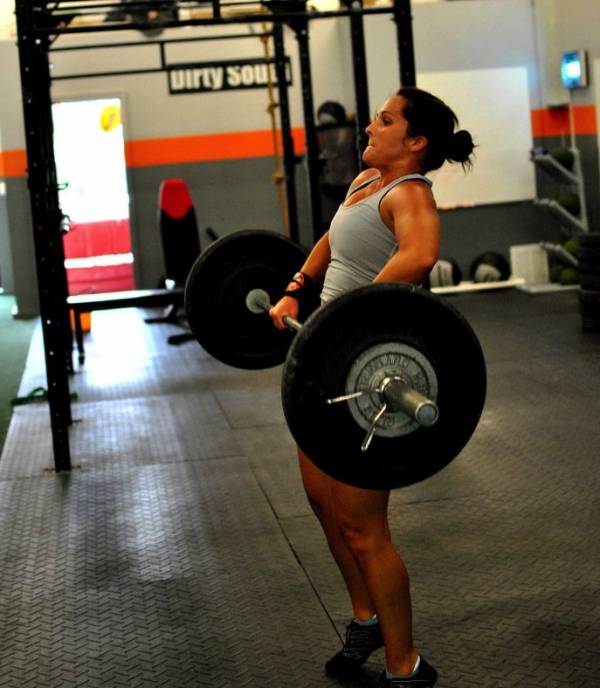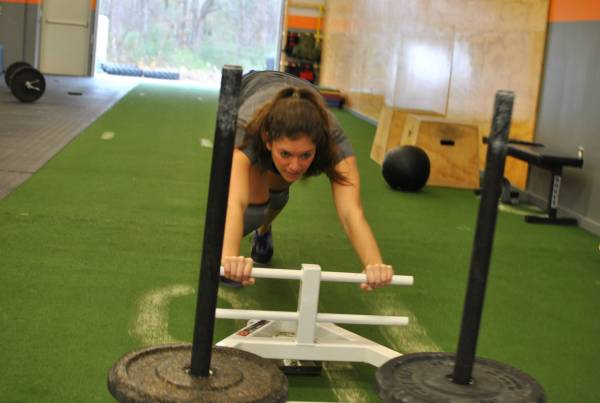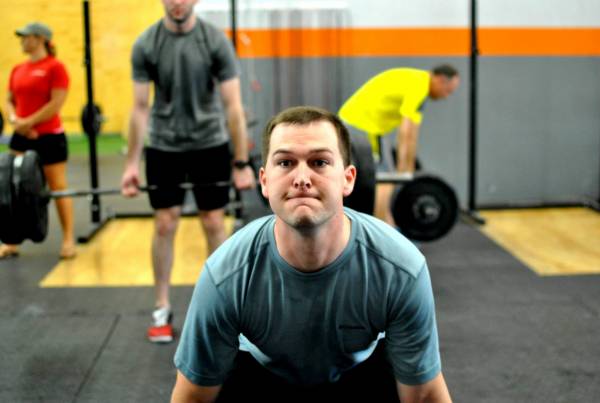Through my time so far as both a strength athlete and strength coach, I’ve discovered there are some very effective aspects of training that, for whatever reason, have not hit most people’s radars yet.
I’m not going to call them secrets, as there are too many “fitness professionals” out there peddling secrets “to get you strong/get you ripped/get you all the [insert opposite sex here].” Rather than secrets, these are simply things I have found make a big difference, but are not given much attention by a large proportion of the training population.
So here are fifteen things that you, me, and everyone else are probably not doing enough of:
1. Things You Don’t Like
This is where it all starts (and sometimes ends). It’s human nature to not like something you’re bad at, which doesn’t tend to get any better as you end up not practicing it. So the first place to start when looking at things you’re not doing enough of is the things you don’t like. But here’s the key: the next step is to figure out why you don’t like them. A lack of knowledge? A technical deficiency? A strength gap? Once you’ve worked this out, then you can start making amends. And don’t tell me they “don’t work for you” until you’ve genuinely tried and tested them.
RELATED: Women and Pull Ups: 3 Secrets for Success You’ve Probably Never Tried
2. Things You Do Like
Don’t work the weak stuff so much that you completely disregard the stuff you do like and are therefore probably good at. You became strong at these movements for a reason. Stay true to your strengths. And you’re probably going to have to work harder at these to see any further improvements.
RELATED: Return on Investment: When to Prioritize Weakness and Strength
3. Partial Movements
What is the obvious thing to do when a particular part of the movement is weak? Continue working the whole movement? Or do you work the aspect that’s weak? Precisely. So why don’t you do much, if any, of this type of work?
RELATED: Training Partials for Stronger Tendons and Bones
4. Isolation Work
Just as you strengthen separate parts of the movement before slotting them back into the whole, you need to do the same with your muscles. You’ve probably heard the phrase “think movement not muscles” bandied about the functional training world. I like to think movements and muscles.
RELATED: 3 Functional Reasons to Do Isolation Movements
5. Questioning
 I’m betting that most of you do not question your training programs much. I know why. Questioning is tiring. It’s much easier to take something as read and just get on with it. But questioning is vital to increasing your understanding of what you are doing. And understanding what you are doing is essential to ensure your own safety and progress. A good coach will be able to tell you straight away why he or she is asking you to do something. A good programmer will be able to explain the purpose of a workout without issue. And when done respectfully, it’s not offensive to whomever you are questioning. The only times you might be (wrongly) considered offensive is when your coach is defensive.
I’m betting that most of you do not question your training programs much. I know why. Questioning is tiring. It’s much easier to take something as read and just get on with it. But questioning is vital to increasing your understanding of what you are doing. And understanding what you are doing is essential to ensure your own safety and progress. A good coach will be able to tell you straight away why he or she is asking you to do something. A good programmer will be able to explain the purpose of a workout without issue. And when done respectfully, it’s not offensive to whomever you are questioning. The only times you might be (wrongly) considered offensive is when your coach is defensive.
RELATED: The Sumo Deadlift High Pull Is Stupid
6. Learning
I don’t just mean reading the stuff you happen to come across on Facebook or Twitter. I mean actively seeking out knowledge on a specific topic or task from a variety of sources. Book out learning time in your diary just like you would for training time.
RELATED: Why Your Excuse About “Not Having Time” Is Just Wrong
7. Deloading
I’ve said it before, and I’ll say it again. But don’t read this and think, “Yeah, that doesn’t apply to me as I’m a beginner/I’m elite/I do that already/I was ill for a few days last month so that’s a deload isn’t it?” Do you even deload, bro?
RELATED: Deloading 101: What Is a Deload and How Do You Do It?
8. Mental Training
Are you practicing your chosen mental techniques regularly or only when it counts? What’s that? You don’t train mental technique at all? Interesting, considering how often you say a missed lift was “in your head.” I wonder what would happen if you trained your mental technique even half as hard as your physical technique. It is a skill after all.
RELATED: See How It’s Done: 6 Lessons on Visualization
9. Strength Work
For you CrossFit WOD junkies, runners, and other endurance athletes, be sure to include some decent strength work in your schedule. Bear in mind that running is in fact just a series of miniature one-legged squats. Strength training will allow you to continue doing what you love faster, harder, and, even if you don’t care about any of that, longer.
RELATED: How to Build Strength to Improve Running Efficiency
10. Conditioning
 For a strength athlete, conditioning is important as to provide you with the ability to work as hard as you want to. If each set you are doing takes less out of you, you will recover quicker both in between sets and in between workouts. And it doesn’t have to be boring. Think hill sprints, sled drags, tire flips, kettlebell swings, and prowler pushes.
For a strength athlete, conditioning is important as to provide you with the ability to work as hard as you want to. If each set you are doing takes less out of you, you will recover quicker both in between sets and in between workouts. And it doesn’t have to be boring. Think hill sprints, sled drags, tire flips, kettlebell swings, and prowler pushes.
RELATED: How to Reach Freak Level Fitness
11. Cooling Down
We all seem to be all over the warm up these days, but what about the cool down? Are you guilty of finishing up your workout, necking your post-workout shake, and then just making tracks? I know I am. The cool down is essential to your continued and continuous progress as an athlete.
RELATED: The Importance of Cooling Down After a Race or Workout
12. Bodyweight Work
If you’re a lifter, do you ever throw in bodyweight work? I’m not talking muscle ups and toes-to-bar here. I’m talking pull ups, push ups, dips, and the like. As well as being good strength builders in themselves, these movements are an excellent way of keeping you honest, in terms of your strength in relation to your bodyweight.
RELATED: 180 Free Bodyweight Workouts!
13. Yoke Carries
I cannot recommend these enough. Anyone who has pushed him- or herself to the limit on yoke carries will be in no doubt of the physiological benefits provided. Walk as fast as you can with three times your bodyweight on your back and there’s not a single muscle that’s not being used – or at least that’s what it feels like. The feelings throughout your body as it recovers in the hours and days after a number of heavy yoke walks only serve to back this up. Moving heavy weight over a distance quickly is the fundamental premise of most strength sports. Here it is at its best.
RELATED: Pick Up Something New: 10 Loaded Carries to Strengthen Your Training
14. Ab Work
Despite what the magazines say, doing heavy compound exercises on their own is not enough work for your abs. If you’re a serious strength athlete, you need serious core strength. Ideally, complete some form of ab work at the end of every session.
RELATED: The Best Abdominal Exercises for the Strength Athlete
15. Grip Work
 Grip has more of an impact on your lifting than you think. Of course, having a stronger grip mean that you can hang off the bar longer (i.e. more pull ups), hang onto a bar longer (i.e. more snatches), or hang onto a heavier bar (i.e. more weight on your deadlift). But there’s a further, more fundamental reason for making your grip stronger. If your hands are unable to grip, or at least it seems that way, they sends a signal to the body that the object is too much for you to safely lift, even if this is not the case. Therefore doing more grip work translates to more strength in more ways than one, and more directly than you may think.
Grip has more of an impact on your lifting than you think. Of course, having a stronger grip mean that you can hang off the bar longer (i.e. more pull ups), hang onto a bar longer (i.e. more snatches), or hang onto a heavier bar (i.e. more weight on your deadlift). But there’s a further, more fundamental reason for making your grip stronger. If your hands are unable to grip, or at least it seems that way, they sends a signal to the body that the object is too much for you to safely lift, even if this is not the case. Therefore doing more grip work translates to more strength in more ways than one, and more directly than you may think.
RELATED: 10 Articles and Videos to Help You Get to Grips with Grip Strength
That last sentence can be applied to many of these items. On their own, these are powerful boosts to your training. Put a few of them in a line and you have a ramp to launch your training to the next level.
Which strength training essentials do you think most people probably don’t do enough of? Let us know in the comments!
Photos courtesy of CrossFit Impulse.






